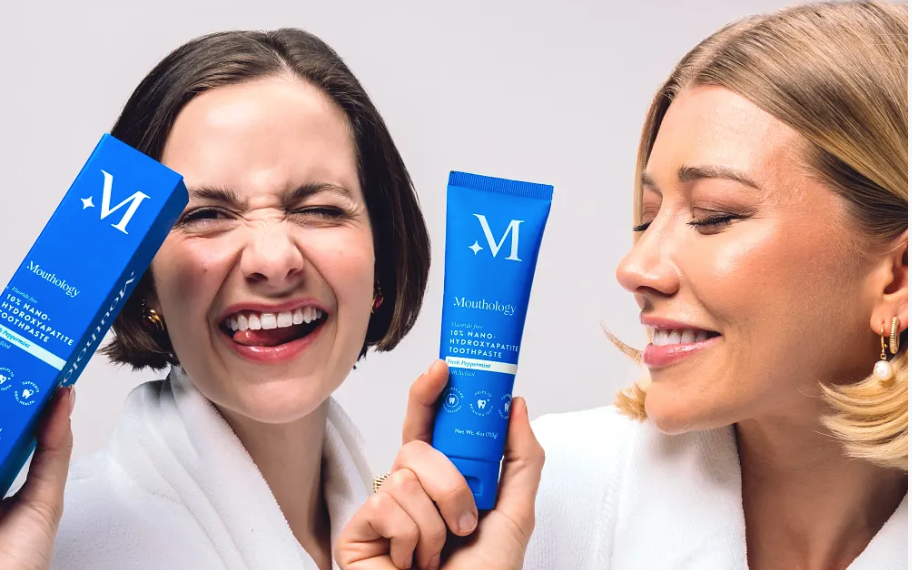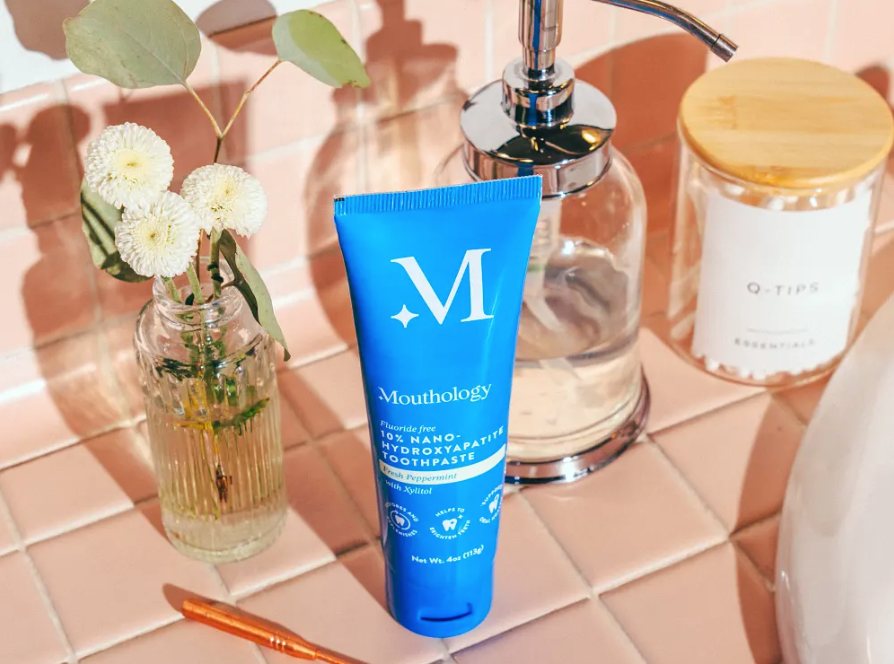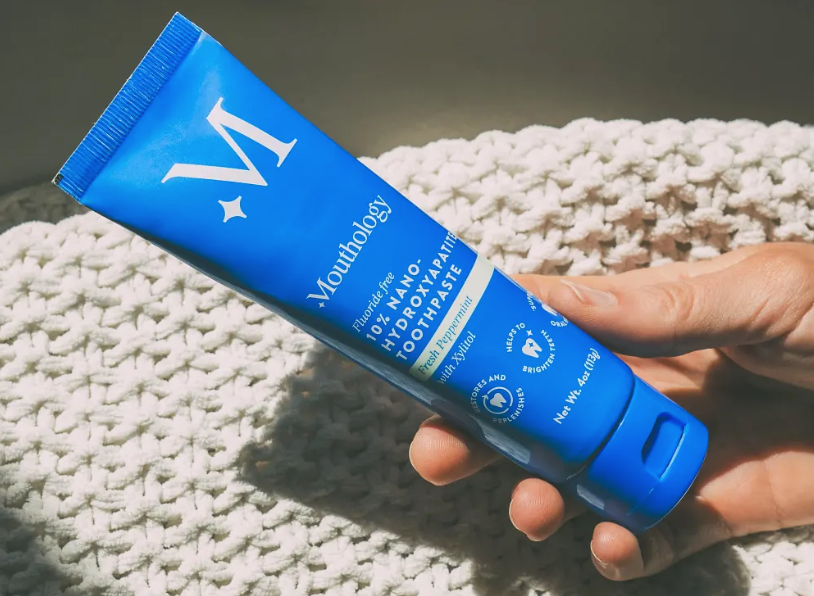Dealing with sensitive teeth can feel like an uphill battle, especially when it comes to finding the right toothpaste. We’ve all experienced that jolt of discomfort from hot coffee or a cold scoop of ice cream, and it’s enough to make anyone dread mealtime. But what if the solution lies in the toothpaste we choose?
After testing twelve top-rated options in our own homes, we discovered what truly makes a difference. From desensitizing ingredients to texture and flavor, the right toothpaste can transform your daily routine. Join us as we explore the essential factors to consider when selecting toothpaste for sensitive teeth, ensuring you can enjoy your favorite foods without the fear of pain. Let’s dive into the world of sensitive toothpaste and uncover the best choices for a pain-free smile.
What To Know About Toothpaste for Sensitive Teeth
Sensitive teeth affect approximately 115 million people in the US. The discomfort can range from mild pain when consuming ice cream to severe pain triggered by hot or cold foods. Various factors, such as worn enamel, gum recession, cavities, cracked teeth, and gum disease can contribute to this sensitivity.
To alleviate hypersensitivity, consider toothpaste specifically formulated for this condition. Toothpastes containing potassium nitrate or stannous fluoride can effectively seal exposed dentin, the root source of tooth pain. Potassium nitrate, for example, blocks nerve signals, while stannous fluoride strengthens enamel and reduces pain sensitivity.
Ingredient effectiveness is crucial. Potassium nitrate concentrations can reach up to 5 percent in some formulations, offering significant protection against sensitivity. Products with this high level ensure that sensitive teeth get the relief they require. Stannous fluoride also promotes overall dental health by combating plaque bacteria and strengthening enamel.
When selecting a toothpaste, consider its consistency. Some formulations feel thicker or creamier, enhancing the brushing experience. A toothpaste that lathers well can improve cleaning quality, while flavors matter too; options range from minty to fruity, catering to personal preferences.
In our testing, we observed how different toothpastes performed in real-life scenarios. Evaluating effectiveness, comfort, and taste helped us determine which products truly provide relief. Understand that personal experiences can vary; while one toothpaste might work wonders for one person, it may not yield the same results for another. Always consult a dental professional to confirm the best toothpaste option tailored to individual needs.
How Does Sensitivity Develop?
Sensitivity in teeth develops due to various factors that expose the dentin layer beneath the enamel. We understand that when the protective enamel wears down or gums recede, the nerve endings in the dentin become vulnerable to external stimuli, leading to discomfort.
Worn enamel: Enamel erosion occurs from acidic foods, excessive brushing, or teeth grinding. Enamel loss exposes dentin, heightening sensitivity.
Gum recession: Gum disease or aggressive brushing can cause gums to pull away from teeth. This recession exposes tooth roots, which can lead to sensitivity.
Cavities: Tooth decay creates openings in the enamel, exposing the dentin, and can trigger pain in response to hot or cold stimuli.
Cracked teeth: Cracks in teeth allow stimuli to reach the nerves, causing sharp, sudden pain and contributing to overall sensitivity.
Gum disease: Periodontal conditions can lead to inflammation and gum recession. Infected or inflamed gums increase the likelihood of sensitivity by exposing more of the tooth.
Dietary factors: Consuming acidic beverages or sugary foods can erode enamel over time. This erosion heightens sensitivity as more of the dentin is exposed.
We recognize that maintaining good oral health can mitigate these issues. Regular dental check-ups, proper brushing techniques, and the use of sensitive toothpaste can protect against sensitivity. Effective toothpaste ingredients like potassium nitrate and stannous fluoride help seal exposed dentin, reducing discomfort significantly. By addressing the factors that contribute to sensitivity, we can work towards an enjoyable eating experience without the fear of pain.
What does tooth sensitivity feel like?
Tooth sensitivity manifests as sharp, short bursts of pain when teeth encounter temperature changes or specific stimuli. Individuals may experience discomfort when consuming hot or cold foods and drinks, such as ice cream or coffee. This sudden pain can range from mild irritation to intense distress, making it difficult to enjoy everyday meals.
We recognize that sensitivity affects different people in varying degrees. Some may notice a dull ache, while others might feel a piercing pain in reaction to sweet or acidic items. This discomfort often arises when stimuli, like cold air or dental procedures, provoke the nerves inside exposed dentin.
Factors contributing to tooth sensitivity often include worn enamel, gum recession, and dental issues. Worn enamel may result from acidic diets or aggressive brushing, exposing the softer dentin layer beneath. Gum recession exposes the root surfaces of teeth, providing another pathway for irritants to reach the nerves. Cracked teeth or untreated cavities can also allow temperature fluctuations and pressure to trigger discomfort.
A staggering 40% of adults experience some form of tooth sensitivity, primarily between the ages of 20 and 50. Understanding these sensations aids us in recognizing when it's time to consult our dentist. By identifying triggers and using specialized sensitive toothpaste, we can effectively manage discomfort and protect our oral health.
Awareness of these experiences helps us make informed choices about our oral care routines. Exploring toothpaste options with effective ingredients can significantly alleviate sensitivity, leading to a more enjoyable eating and drinking experience.
How to Deal with Sensitivity to Cold
To deal with sensitivity to cold effectively, we recommend a combination of strategies. First, using a sensitive toothpaste containing active ingredients like potassium nitrate can significantly alleviate discomfort. These ingredients work by sealing exposed dentin and blocking nerve signals, providing relief from pain.
Next, we can adjust our eating and drinking habits. Consuming foods and beverages at moderate temperatures reduces the shock to sensitive teeth. Choosing lukewarm options instead of icy ones minimizes discomfort. Similarly, avoiding overly acidic or sugary items helps prevent further enamel erosion and aggravation of sensitive areas.
Another important factor is adopting proper oral hygiene practices. Using a soft-bristled toothbrush and employing gentle brushing techniques prevents enamel wear and gum recession, which contribute to sensitivity. We should focus on our brushing angles and avoid aggressive back-and-forth motion.
Monitoring our oral health is crucial. Regular dental check-ups allow us to address issues like cavities or gum disease early, preventing exacerbation of sensitivity. Keeping track of any changes in sensitivity patterns will help identify potential triggers, allowing us to adjust our routines accordingly.
Ultimately, proactive measures can help us manage sensitivity to cold effectively, allowing us to enjoy a wider range of foods and beverages without discomfort.
Tips for Tooth Sensitivity to Hot
We can effectively manage tooth sensitivity when consuming hot foods and drinks by implementing specific strategies.
Choose Sensitivity Toothpaste: Use toothpaste formulated for sensitive teeth. Look for ingredients like potassium nitrate, as these work to block nerve signals and reduce sensitivity triggered by temperature changes.
Avoid Extreme Temperatures: Limit exposure to very hot foods and drinks. Instead of piping hot coffee, opt for warm beverages. This reduces the abrupt temperature change that can provoke sensitivity.
Use a Soft-Bristled Toothbrush: Select a soft-bristled toothbrush to minimize enamel wear during brushing. Gentle brushing protects sensitive areas and keeps discomfort at bay.
Practice Good Oral Hygiene: Brush teeth twice a day using gentle strokes. Floss daily to remove debris between teeth, preventing plaque buildup that can contribute to sensitivity.
Monitor Dietary Choices: Avoid highly acidic or sugary foods that can exacerbate sensitivity and wear down enamel. Instead, focus on foods and beverages with neutral pH levels.
Consider Professional Treatments: Consult our dentist about professional fluoride-free treatments. They can strengthen enamel and might help alleviate sensitivity.
Stay Hydrated: Drinking plenty of water helps maintain saliva production. Saliva neutralizes acidity in the mouth and aids in protecting tooth enamel.
By following these tips, we can better enjoy our favorite hot foods and drinks without discomfort. Implementing these strategies fosters a more enjoyable eating experience while managing tooth sensitivity effectively.
How do I get rid of my sensitive teeth?
Using a daily sensitivity toothpaste alleviates and protects against tooth sensitivity pain. For optimal results, we recommend brushing twice daily. These toothpastes form a protective barrier over sensitive areas while addressing the discomfort tied to temperature changes.
Adopting gentle oral hygiene practices enhances the effectiveness of sensitive toothpaste. We suggest employing a soft-bristled toothbrush that cleans without irritating sensitive areas. This approach protects gums and prevents further enamel erosion, which can be contributing factors to tooth sensitivity.
Modifying dietary habits also plays a crucial role in managing sensitivity. Limiting acidic and sugary foods prevents further enamel wear, as these substances can aggravate sensitivity. Choosing lukewarm foods and beverages minimizes the likelihood of triggering sharp pain from extreme temperatures.
Consulting a dentist becomes essential when persistent sensitivity occurs. A dental professional can diagnose underlying conditions such as gum disease or cavities, which can compound sensitivity issues. Additionally, exploring professional fluoride treatments can enhance enamel strength beyond what over-the-counter options can achieve.
By intertwining the right toothpaste, effective brushing techniques, and mindful dietary choices, we can significantly reduce tooth sensitivity and improve our overall oral health.
Toothpaste for Sensitive Teeth
Toothpaste formulated specifically for sensitive teeth plays a crucial role in managing discomfort and protecting oral health. Understanding the ingredients and causes of sensitivity helps us select the right products.
Does Mouthology Fluoride-Free Toothpaste help prevent cavities?
Mouthology Fluoride-Free Toothpaste is designed to support overall oral health, but it does not contain fluoride, which is widely recognized for its role in cavity prevention. Instead, it focuses on strengthening enamel and providing relief from sensitivity using nano-hydroxyapatite, a research-supported alternative. While fluoride has long been the standard for cavity protection, many users prefer a fluoride-free option, and nano-hydroxyapatite has shown promising benefits in remineralization. For those avoiding fluoride, maintaining a well-balanced diet, practicing excellent oral hygiene, and scheduling regular dental check-ups are essential for keeping cavities at bay.
What causes tooth sensitivity?
Tooth sensitivity arises from several factors. Worn enamel, gum recession, cavities, cracked teeth, and gum disease expose the dentin layer beneath the enamel, leading to discomfort. Additionally, aggressive brushing, teeth grinding, and acidic foods can contribute to enamel erosion. Understanding these causes allows us to make informed choices about toothpaste and oral care routines.
What makes my sensitive teeth hurt?
Sensitive teeth hurt mainly due to exposed dentin, which houses nerve endings. When temperature-sensitive stimuli, like hot or cold foods, reach these nerves, pain occurs. Factors such as enamel erosion, gum recession, and cavities amplify this sensitivity by creating pathways for stimuli. Identifying and addressing these issues can help us minimize discomfort during meals.
Is tooth sensitivity common?
Tooth sensitivity is common, affecting approximately 40% of adults, particularly those aged 20 to 50. This prevalence points to the widespread nature of dental issues and external factors, such as diet and oral hygiene, contributing to sensitivity. Recognizing sensitivity as a frequent condition pushes us to take proactive steps in pain management and preventive care.
What are the side effects of toothpaste sensitivity?
Some individuals experience side effects when using sensitivity toothpaste, primarily due to its active ingredients. We recognize the importance of understanding these potential reactions to ensure an effective oral care routine.
Gum Irritation: Some toothpastes, especially those containing certain abrasive agents, can irritate the gums, causing redness or discomfort. Choosing gentler formulations helps mitigate this issue.
Increased Sensitivity: In rare cases, sensitivity toothpaste may initially lead to heightened sensitivity. This reaction typically occurs as the toothpaste works to relieve existing pain, prompting nervous responses from the exposed dentin.
Allergic Reactions: A small percentage of users may develop allergies or sensitivities to specific components, like flavoring agents or preservatives. Monitoring any adverse reactions can help us identify the cause and switch to an alternative product.
Taste Alteration: Some people report a temporary change in taste perception after using specific sensitive toothpaste brands. This side effect generally resolves after discontinuing use or switching to another flavor.
Staining: Certain sensitivity toothpaste formulas may cause staining or discoloration over time. Regular dental cleanings, along with product selection, can aid in maintaining tooth appearance.
By identifying these side effects, we can better understand our experiences with sensitivity toothpaste and explore suitable alternatives if necessary. Regular consultations with our dentist also ensure that we receive tailored recommendations that fit our individual needs.
Is it OK to use sensitive toothpaste everyday?
Yes, using sensitive toothpaste every day is not only acceptable but often recommended for those experiencing tooth sensitivity. Daily use of toothpaste formulated for sensitivity offers continuous relief from discomfort triggered by hot, cold, or sweet stimuli. We can expect significant improvements in sensitivity when we consistently brush with these specialized products.
Many sensitive toothpastes include active ingredients such as potassium nitrate. These ingredients work by either soothing the nerves inside our teeth or forming a protective barrier over sensitive areas. This protective approach reduces sensitivity to temperature changes, making it easier for us to enjoy a wider variety of foods and beverages.
Using sensitive toothpaste twice a day enhances its effectiveness in providing relief. Regular brushing ensures that the active ingredients remain in contact with our teeth and gums, promoting ongoing protection. Furthermore, some manufacturers assert that noticeable relief can occur within a few days, with maximum benefits typically seen after one to two weeks of consistent use.
It's important to note that while we reap the rewards of sensitive toothpaste, we should also monitor for any potential side effects. Some individuals might experience gum irritation or changes in taste. If these issues arise, it's wise to consult with a dental professional for tailored advice.
Incorporating sensitive toothpaste into our daily oral hygiene routine protects against tooth sensitivity while supporting overall oral health, demonstrating an effective strategy for managing discomfort and preserving our smiles.
Take Control of Tooth Sensitivity and Gum Problems
Managing tooth sensitivity doesn’t have to be a daunting task. By choosing the right sensitive toothpaste and adopting gentle oral hygiene practices, we can reduce discomfort and protect our teeth. It’s essential to pay attention to our individual needs and preferences when selecting a toothpaste.
Regular dental check-ups and monitoring our oral health are crucial steps in this journey. With the right strategies in place, we can enjoy our favorite foods and beverages without the fear of pain. Let’s embrace the benefits of sensitive toothpaste and take charge of our dental health for a more comfortable and enjoyable eating experience.




